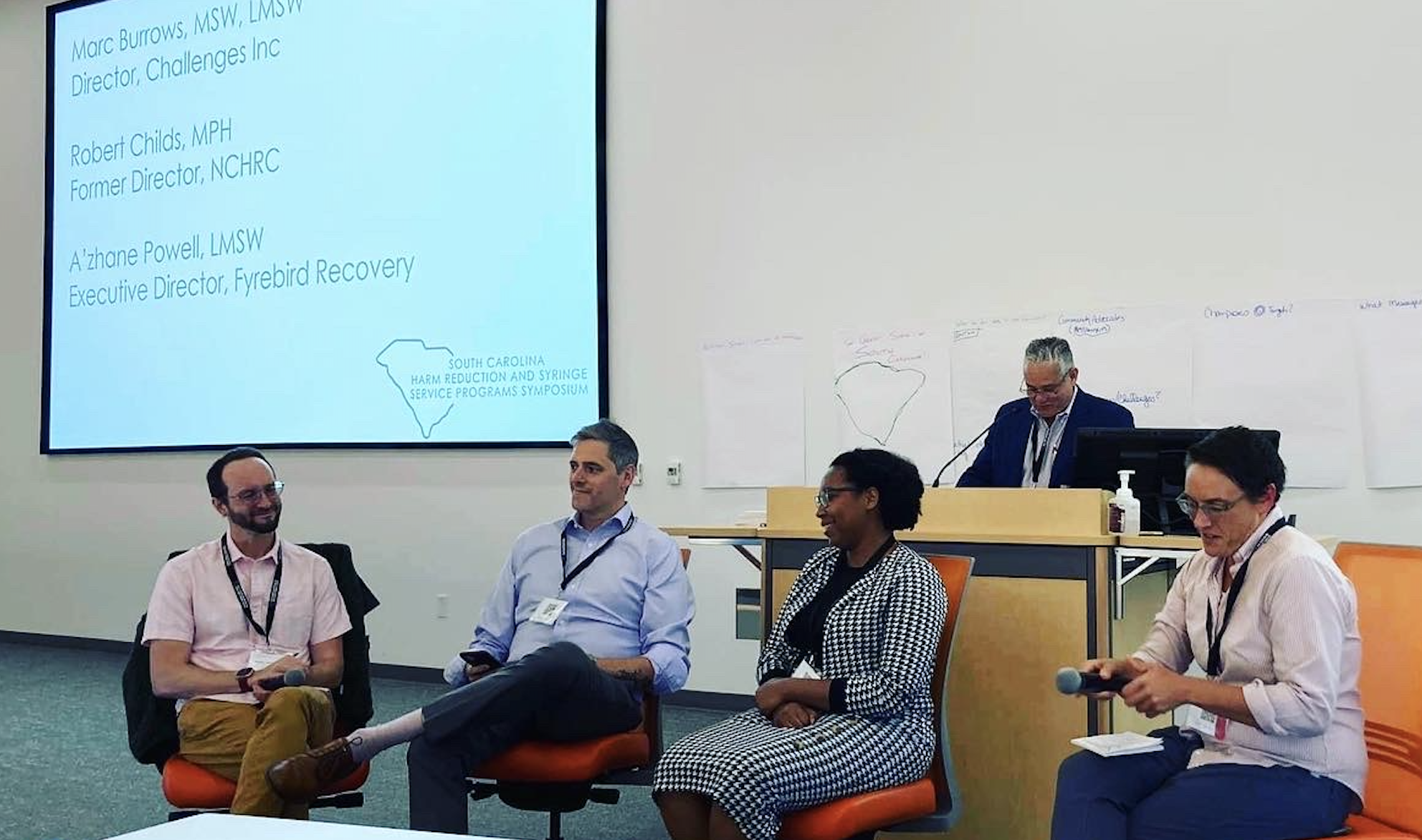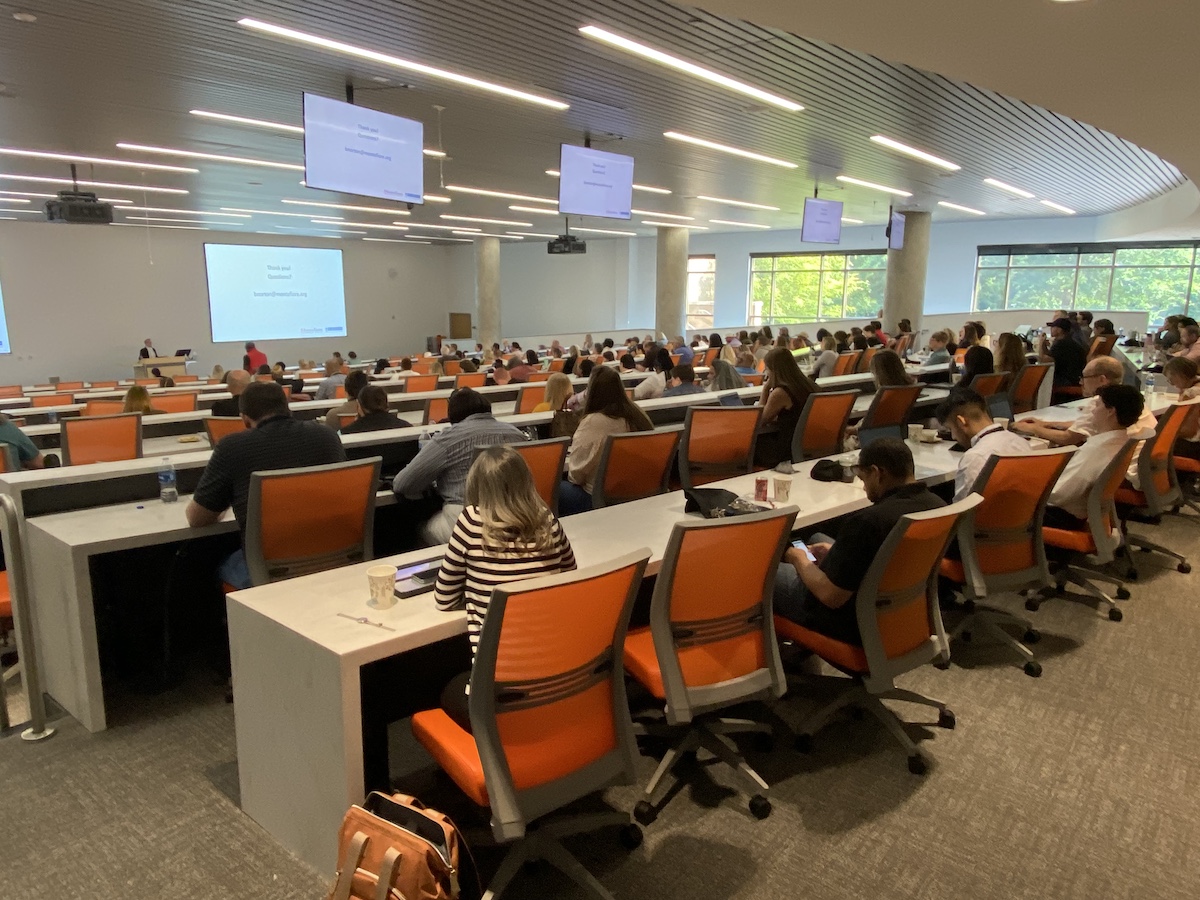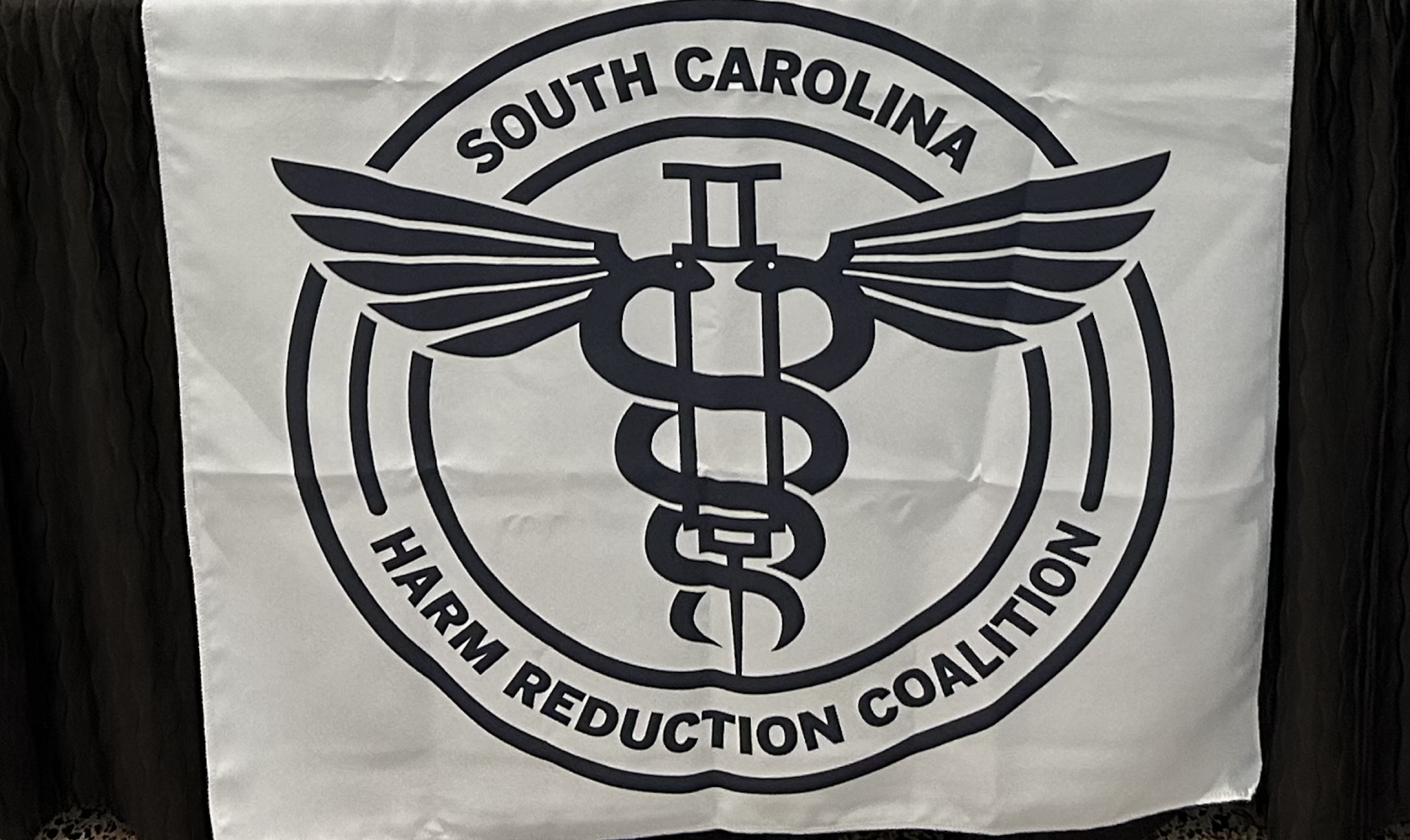I’ve been practicing harm reduction and advocating for syringe access for people who use drugs in South Carolina since 2017. I’ll look back on 2023 as an intensely challenging, sometimes distressing year, as it has been for many of us doing this work.
But there have also been real bright spots—including harm reductionists’ ongoing efforts to build collective power here, and an unprecedented harm reduction conference that increased that momentum.
In South Carolina, syringe service programs like the one I operate exist in a legal “gray area,” and it can be difficult to find the political or financial support that leads to fruitful outcomes.
These situations can make you feel like you’re stuck in place, getting nowhere.
For example, supporters who work for large agencies or funding organizations are usually fearful to do too much internal advocacy, due to stigma. It can be hard to break through to the decision-makers whose backing could win real progress.
And if someone in a leadership position does support the cause, their willingness to advocate for big change usually gets averted by the fear of losing funding or becoming unpopular with their board.
These and other situations can make you feel like you’re stuck in place, getting nowhere.
That’s why it was so enormously encouraging when a harm reduction conference—a first-of-its kind event, directly confronting the barriers faced by South Carolina harm reduction—was held in my home town of Greenville.
PRISMA Health, the state’s largest employer and hospital system, took the initiative to organize and host it: The South Carolina Harm Reduction and Syringe Service Programs Symposium.
It was led by the director of PRISMA’s Addiction Medicine Center, Dr. Alain Litwin. Alain has been a tremendous catalyst for the growth of syringe services in Greenville, and a champion for harm reduction in the health care system. He brings a wealth of drug-user health knowledge and experience from his time at Albert Einstein College of Medicine in New York City. He and I have been collaborating on different projects for several years.
The June 9 event featured presentations, panels and break-out groups. Over 200 people registered, many of them local. They were people with lived experience, harm reductionists, addiction professionals, social workers, health care professionals, academics, medical students, pharmacists, public health workers, to name a few—as well as state agency bureaucrats.
The day’s objectives included outlining the evidence to support SSP, highlighting innovative national models, and discussing legal and policy issues in South Carolina, with reference to experiences in other states.
We also aimed to develop a collaborative action plan for expanding syringe services in South Carolina.
I would be lying if I said I did not get some pleasure from watching state agency directors shrinking with embarrassment.
Speakers included Dr. Kimberly Sue, then–medical director of the National Harm Reduction Coalition; Dr. Brianna Norton, medical director of OnPoint NYC; Najja Morris-Frazier and Brendan Cox of Law Enforcement Assisted Diversion (LEAD); and Jon Zibbell of the Research Triangle Institute (RTI).
Those of us with direct experience of SSP also included A’zhane Powell of Fyrebird Recovery, which operates a newly founded South Carolina SSP; Robert Childs, former director of North Carolina Harm Reduction Coalition; and myself, representing Challenges Inc.

Panelists including (from left) Robert Childs, the author Marc Burrows, and A’zhane Powell
While the event was unique, it was not actually the first harm reduction conference in South Carolina. In March 2020, NASTAD hosted its annual Southern SSP Institute in Charleston. We were fortunate to have it, and it shared valuable harm reduction information. Yet without certain stakeholders, with few members of state agencies in attendance, it was hard for that event to shine a light on the most pressing harm reduction issue here: the legality of SSP.
This issue was front-and-center at the Greenville Symposium.
Corey Davis of the Network for Public Health Law presented a particularly compelling policy brief, outlining why state legislation does not leave SSP outside the law.
I would be lying if I said I did not get some pleasure from watching state agency directors looking on with solemn stares, shrinking with embarrassment, as he made his case. His evidence defied the usual message we’ve been told by state government: that SSP are illegal.
“A breath of fresh air in an environment still struggling to embrace evidence-based practices.”
Another stand-out presenter was Christina Dent, founder of End it for Good. She described her experience as a southern Christian conservative-turned-drug policy reformist. Her message obviously resonated with the audience, and was a perfect strategic fit for our context in South Carolina.
In their individual ways, all of the presenters did a fabulous job of bringing home the importance of SSP and real harm reduction work, and people in attendance were left asking why we aren’t doing more in our state.

“Change comes slowly, and harm reduction is facing a tremendous amount of resistance,” Michael Crouch, a person with lived experience and addictions professional who has spent most of his life in South Carolina, told me afterwards.
Calling the event “a breath of fresh air in an environment still struggling to embrace evidence-based practices,” he praised the detailed focus on SSP and discussions of wider drug policy. Altogether, he said, it “made me feel like there is hope for South Carolina.”
I felt the same way. And this energy has carried over into my harm reduction work in the past six months.
But the Symposium was much more than a morale boost. Remember the day’s objective of an action plan?
June 9 also served as a kicking-off point for the newly re-formed South Carolina Harm Reduction Coalition, which seeks to build on this momentum into expanded statewide advocacy and public education for harm reduction and drug-user health policies.
In the work I do, any day a person does not have to share or reuse a syringe is enough to keep me going. But if I have hope for a better 2024, it’s because of the collaborative power among advocates that I have witnessed in our state this year.
All photographs courtesy of Marc Burrows




